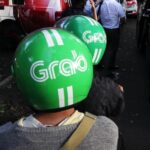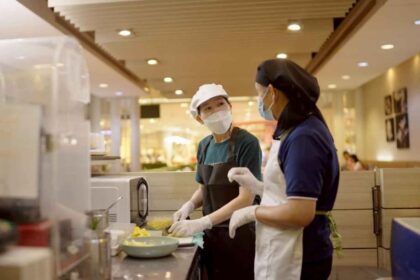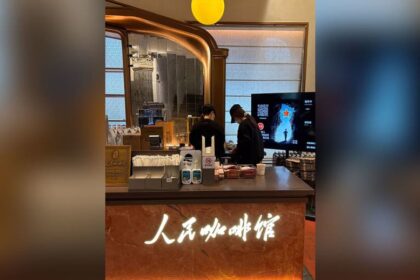Why Taiwan is racing to harden its air defenses
Taiwan is moving fast to harden its air defenses because the cost of a single successful missile strike could cascade far beyond its shores. The new priority is to shield Hsinchu Science Park, Taipei and other critical nodes of the island’s chip economy. A researcher with Taiwan’s National Science and Technology Council warned that one missile detonating in Hsinchu Science Park, home to more than 600 technology firms including TSMC, could trim 6 to 10 percent from global GDP and derail new iPhone production for years. The risk is not theoretical. It is a function of geography, concentration of assets, and the growing strike power across the Taiwan Strait.
China regards Taiwan as its territory and has scaled up air and naval pressure. The United States assesses the People’s Liberation Army could have the capability to mount an invasion by 2027. In this environment, Taipei is committing to lift defense spending to 5 percent of GDP by 2030 and to build T Dome, an air defense network inspired by Israel’s Iron Dome. The aim is protection against aircraft, drones, cruise and ballistic missiles, and even emerging hypersonic threats.
The plan is rooted in a concept often called the silicon shield, the idea that the island’s central role in advanced semiconductor production deters attack because disruption would shock the world economy. Former president Tsai Ing wen has framed chips as both an economic engine and a layer of national resilience. She has also linked Taiwan’s technology sector to a broader strategy of societal strength.
Our high tech sector, particularly in semiconductors, has become an indispensable part of the global economy. In an age where AI also defines power, Taiwan’s chip industry anchors global prosperity. Now, it is such an initiative that helps Taiwan strengthen its defence and societal resilience in the face of threats.
What T Dome aims to do
T Dome is presented as a multi layer system that knits together sensors, command software and interceptors to block incoming threats. The government says it will integrate domestic and foreign equipment with smart technology so the network can identify targets faster, prioritize the most dangerous tracks, and cue the right interceptor at the right time. Initial integration is expected to start soon, backed by a special defense budget.
In his National Day address, President Lai Ching te pledged speed and scope, describing a stricter air defense net with better detection and interception to protect civilians and critical sites.
We will accelerate our building of the system and weave a safety net for Taiwan to protect the lives and property of citizens.
Officials say the spending plan will include funds for better radar coverage, data fusion and interception capacity. Beyond hardware, the administration created a Whole-of-Society Defense Resilience Committee to improve coordination between ministries, first responders and the private sector, including technology firms responsible for power, water and chip production.
Inside Taiwan’s air defense network
Taiwan already operates multiple air defense layers. US made Patriot batteries protect key population centers and bases. Indigenous Sky Bow interceptors (Tien Kung) provide area defense, and the new Chiang Kong system unveiled at a defense exhibition is designed to engage mid range ballistic missiles at higher altitude than Patriots. T Dome is intended to tie these pieces into a single web that is more adaptive and more survivable under fire.
Detection and command
Early warning is everything. A better air picture depends on fixed and mobile radars, passive sensors that pick up emissions, and feeds from friendly aircraft and satellites. Taiwan plans to use advanced software, including artificial intelligence, to filter noise, classify targets and recommend engagement options to human operators. The goal is faster timelines from detection to decision, which matters when flight times can be counted in minutes.
Interceptors and layers
No single interceptor defeats the spectrum of threats. Short range missiles and mobile guns can counter rockets and drones. Medium and high altitude interceptors handle cruise and ballistic missiles. Israel’s experience shows that a dense but flexible layout, coupled with rapid resupply, improves survival. Taiwan has not disclosed the exact missile mix for T Dome. The most likely path is to expand numbers of existing systems, add point defense for factories and bases, and field new short range interceptors that are less expensive per shot.
Survivability is as important as accuracy. Launchers, radars and command posts must move frequently, hide in hardened shelters and use decoys. Communications need multiple backups so units can fight even if a node is hit. These tactics raise the cost of a saturation strike, the scenario in which an attacker fires enough missiles at once to exhaust interceptors.
Countering drones and hypersonic threats
Drones and loitering munitions can fly low, change course and arrive in large numbers. T Dome will need a mix of jamming, directed energy where feasible, and low cost interceptors. Hypersonic glide vehicles, such as those carried by the DF 17, travel fast and maneuver in the upper atmosphere, which complicates tracking and interception. Taiwan’s path is to push detection outward, refine tracking with better sensors, and use interceptors that can reach higher and react faster. That includes systems like Chiang Kong for high altitude shots and upgrades to existing Patriots and Sky Bow units.
The semiconductor stakes
Taiwan manufactures most of the world’s cutting edge chips. TSMC alone produces the vast majority of the most advanced logic devices used in smartphones, cloud data centers and AI accelerators. Hsinchu Science Park concentrates many of these facilities in one area, with more than 600 companies connected by power, water and gas infrastructure. This concentration is efficient in peacetime, and fragile in a conflict.
A strike that disrupts clean rooms, power or ultra pure water can halt a fab for months. Replacing specialized tools is slow and costly. Industry experts warn that even one missile landing in the wrong place could make it impossible to buy a new flagship smartphone for several years. The economic effect would not end with phones. Cars, medical devices, industrial sensors and national defense systems would feel the shock.
Governments are trying to spread the risk. The United States has funded new plants through the CHIPS and Science Act, with TSMC building in Arizona and other firms expanding capacity. Japan has attracted top tier projects. Europe is pushing its own plan. The scale and complexity of the supply chain, from chemicals to lithography, means real independence from Taiwan and China could take decades. Analysts inside the industry estimate at least 20 years.
The silicon shield has limits. If Beijing chooses to destroy rather than capture production, the deterrent value fades. Taipei now treats deterrence and defense as twin tasks. The move to T Dome recognizes that protecting people and infrastructure is the first priority if deterrence fails.
How Beijing and Washington are reshaping the contest
China has expanded missile brigades along its coast and fields a growing mix of ballistic and cruise systems. Analysts track deployment of DF 26 intermediate range missiles and the DF 17 with a hypersonic glide vehicle. Several assessments conclude the Rocket Force increased its arsenal by roughly half in recent years. Air and naval operations around Taiwan, including large flights entering the island’s air defense identification zone, seek to probe defenses and wear down readiness.
The United States remains the key external factor. Washington sells F 16 fighters, Patriot interceptors and other systems to Taiwan, and trains with Taiwan’s forces. Congress approved a large foreign assistance bill that included funds for Taiwan and Indo Pacific partners and humanitarian aid. The money will support advanced military technology and training across the region.
American policy keeps an element of strategic ambiguity, aiming to dissuade a forced unification while avoiding a blank check. Successive administrations have urged Taipei to spend more on its own defense. The target of 5 percent of GDP by 2030 reflects that pressure and the rising cost of modern air and missile defense.
Can T Dome keep factories running in a war
Expectations shape outcomes. T Dome is designed to keep society functioning, protect population centers and shield the most critical infrastructure long enough for help to arrive. It cannot guarantee uninterrupted chip production under sustained bombardment. The aim is to limit damage, reduce casualties and preserve the capacity to recover faster after an attack.
Taiwan is pushing resilience beyond the military. The Whole-of-Society Defense Resilience Committee seeks to align government agencies, utilities and the private sector on continuity plans. That includes backup power, redundant water sources, stockpiles of specialty gases and hardening of data centers that manage fabrication lines. Companies are also dispersing some production overseas as insurance, although the most advanced work remains at home.
A senior US administration official reacted to President Lai’s National Day speech with a call for restraint, saying routine addresses should not trigger military coercion.
We are not going to speculate on how Beijing might react. Our general policy is that we do not think routine speeches should be used as a pretext for taking any sort of coercive or military action.
Politics, partnerships, and controversy
Defense budgets are a political battle. The opposition Kuomintang prefers to lower tension and focus on dialogue with Beijing, while the governing Democratic Progressive Party argues that strength enables stability. KMT vice chairman Andrew Hsia has warned that without a political foundation for talks, hostility is rising.
There is no political base for a dialogue between the ruling Democratic Progressive Party and Beijing, so there is no dialogue and they are becoming more hostile towards each other.
Taiwan is exploring cooperation with advanced defense industries abroad. Officials talk about learning from Iron Dome and integrating cyber and counter drone tools. Unofficial ties with partners in the Middle East, including Israel and Gulf states, have widened in areas such as AI and cybersecurity, even without formal diplomatic recognition.
Civil society groups have alleged that some Taiwanese companies supply materials or technologies used in foreign weapons programs, including missile defense. The claims, which name firms across metals, motion control and electronics, spark debate inside Taiwan about dual use exports, transparency and the balance between commercial success and values. The government faces pressure to tighten oversight while preserving a high tech economy that sells globally.
Beijing’s response to Taipei’s defense agenda remains harsh. Chinese Foreign Ministry spokesperson Guo Jiakun accused President Lai of stoking confrontation and urged unification under Beijing’s terms.
He peddles the separatist fallacy of Taiwan independence.
The stakes extend beyond the Taiwan Strait. Recent attacks on merchant shipping in the Indian Ocean and the Red Sea have already rerouted cargo and lifted costs for many industries. A war over Taiwan would multiply those disruptions and hit the electronics supply chain at its core.
At a Glance
- Taipei will build T Dome, a multi layer air defense network inspired by Iron Dome, to counter missiles, drones, and aircraft.
- Defense spending is set to rise to 5 percent of GDP by 2030, with a special budget to accelerate integration.
- A researcher warned that a single strike on Hsinchu Science Park could cut global GDP by 6 to 10 percent and stall new iPhone output for years.
- Existing systems, including US made Patriots, indigenous Sky Bow, and the new Chiang Kong interceptor, form the core that T Dome will connect.
- China’s Rocket Force has expanded with missiles such as DF 26 and DF 17, while air and naval pressure around Taiwan continues.
- The United States supplies arms and training under a policy of strategic ambiguity and urges higher Taiwanese defense spending.
- TSMC dominates advanced chipmaking, making any disruption a global shock; industry estimates say it may take decades to build full redundancy outside Taiwan and China.
- Taiwan created a Whole-of-Society Defense Resilience Committee to coordinate civil and private sector preparedness.
- Political debate at home continues, with the KMT favoring dialogue and the ruling party prioritizing deterrence through strength.
- The goal of T Dome is to protect people and critical infrastructure and to buy time, not to guarantee uninterrupted chip production during a conflict.












